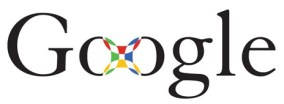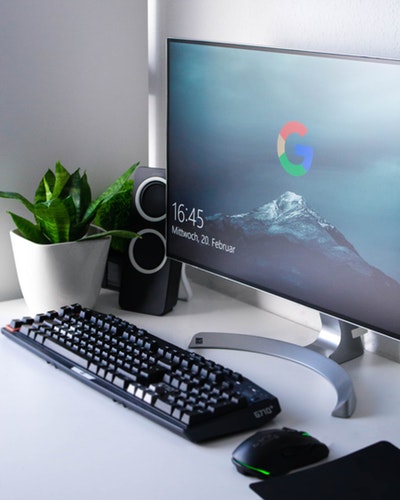Google’s Got It All!
By Aishath Nashaya Imad, Marketing Intern, Lava Protocols
How many of you googled something today? When was the last time you used a different search engine like Yahoo or Bing?
These are important questions because according to StatCounter, as of 2019, the world market share for internet search using Google is 92.04%. This is followed by Yahoo at 2.67% and Bing at 2.39%.
Australian digital agency Ardo Seo revealed that Google has approximately 7 to10 billion searches each day!
Fascinating isn’t it? I think it’s safe to say that Google’s algorithm for its search results is not equivalent to anything else in the world.
What’s more interesting is the backstory of Google’s success. Even though we may feel like we know all there is to know about Google since we use it on a regular basis but I’d bet you didn’t know Google wasn’t called “Google” initially. Google.com was a domain registered in 1997 but before that, it was called “BackRub”.
Why? Because the algorithm analyzed websites’ “back links” to determine its relevancy.
The Evolution of Google’s Logo
Google is a little over 20 years old — and younger than most of us — but in this short amount of time, the face of Google (their logo) has undergone several redesigns, overhauls, and tweaks.
In 1997, the letters of the logo were sparse (or thinly dispersed as the Oxford Dictionary describes it).

Image source: Gizmodo
In 1998, the letters became more refined.

Image source: Gizmodo
1999 is the year Google underwent major changes fast. From the short-lived exclamation mark, it’s logo was changed to all black letters and a colored symbol was placed in between the Os to represent an infinite connection.

Image source: Gizmodo

Image source: Gizmodo
After that, various versions were created by adding something similar to a target symbol (to signify precision), magnifying glasses, and smiley.
From 2010 onwards, they went back to the basics and incorporated a secondary color to the letter ‘L’ to signify that they “don’t follow the rules”. It then evolved to become flatter, brighter, and easier to read.

Image source: Gizmodo
Google’s Journey/Timeline
Google experienced a rough start, just like any other company. Google may have a huge office now but according to The Guardian, when it first started out in 1998, Google’s workspace was only a small garage in Silicon Valley. However, by the following year, they outgrew the garage office and moved into a more professional office with eight employees.
In the early 2000s, the first 10 language versions of Google.com were released — French, German, Italian, Sweden, Finnish, Spanish, Portuguese, Dutch, Norwegian, Danish.
That same year, Google partnered with Yahoo.com to become its default search provider. Because of this decision, people became more aware of Google and in return, became the world’s largest search engine with the first billion URL index, the Guardian reported.
In 2002, Google partnered with AOL (the American online service provider) and launched Google News with over 4,000 sources.
In 2004, Gmail was launched and the company went public. The following year saw the launch of Google Maps. 2006 was the year when Google acquired famous video-sharing site, Youtube. In 2008, Google Chrome was launched.
There’s a lot more to the history of Google, but the above are just some of their significant milestones.
What Makes Google Unique?
Google offers a plethora of features and products for their users.
Google Classroom, for example, is a web service that helps teachers stay organized, communicate with their class, gather feedback, hand out assignments, and have everything in one place.
Google Cloud Search enables you to search across your company’s content (Drive, Gmail, Calendar, etc.) seamlessly and even get relevant recommendations.
There’s also Google Assistant, an AI-powered virtual assistant that can help you get things done a lot faster such as helping you to order food or clean the house (by communicating with a robot cleaner).
In the business context, G Suite is incredibly useful. By having your Gmail, Drive, Calendar, and Docs in one place, users can easily navigate between each app and collaborate with other users seamlessly. It’s storage capacity and mobile accessibility are added advantages.
Read: Gain work insights with the new G Suite
Google Maps is also commonly used in businesses for location intelligence. Companies use location-based data to derive commercial and consumer insights. For example, a credit card company can monitor merchant transactions across different areas and strategize its product offerings accordingly. Visual data can provide quick insights rather than looking at various spreadsheets.
In a Nutshell
With all these products and features, Google remains the most unique and most popular search engine in the world.
One thing’s for sure: Google will never fail to amaze us. Google has always been a step ahead from the rest and has always made its users achieve exactly what they need to and more.
The future with Google will have a lot of unexpected but delightful inventions such as different types of robots, better self-driving cars, and things that we can’t even think of at the present moment.
With Google, nothing is impossible!
– – – –
Lava is an authorised Cloud Partner of Google and is a reseller of G Suite (previously known as Google Apps, Google Maps for Work, and Google Cloud Platform) in Malaysia. With more than a decade of experience in the industry, we’re proud to say we’re one of the leading cloud consultants and service providers in the Asia Pacific region.

